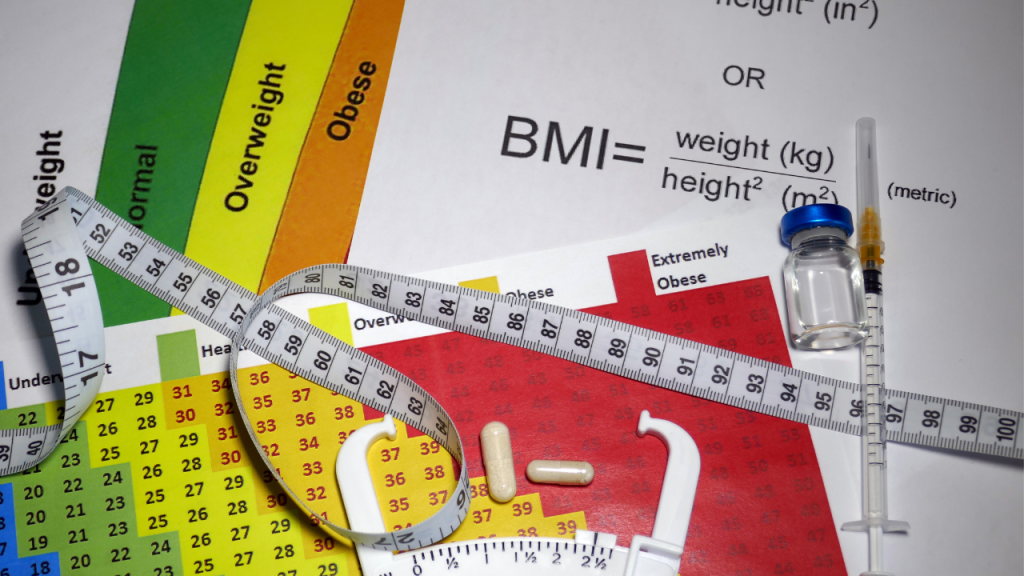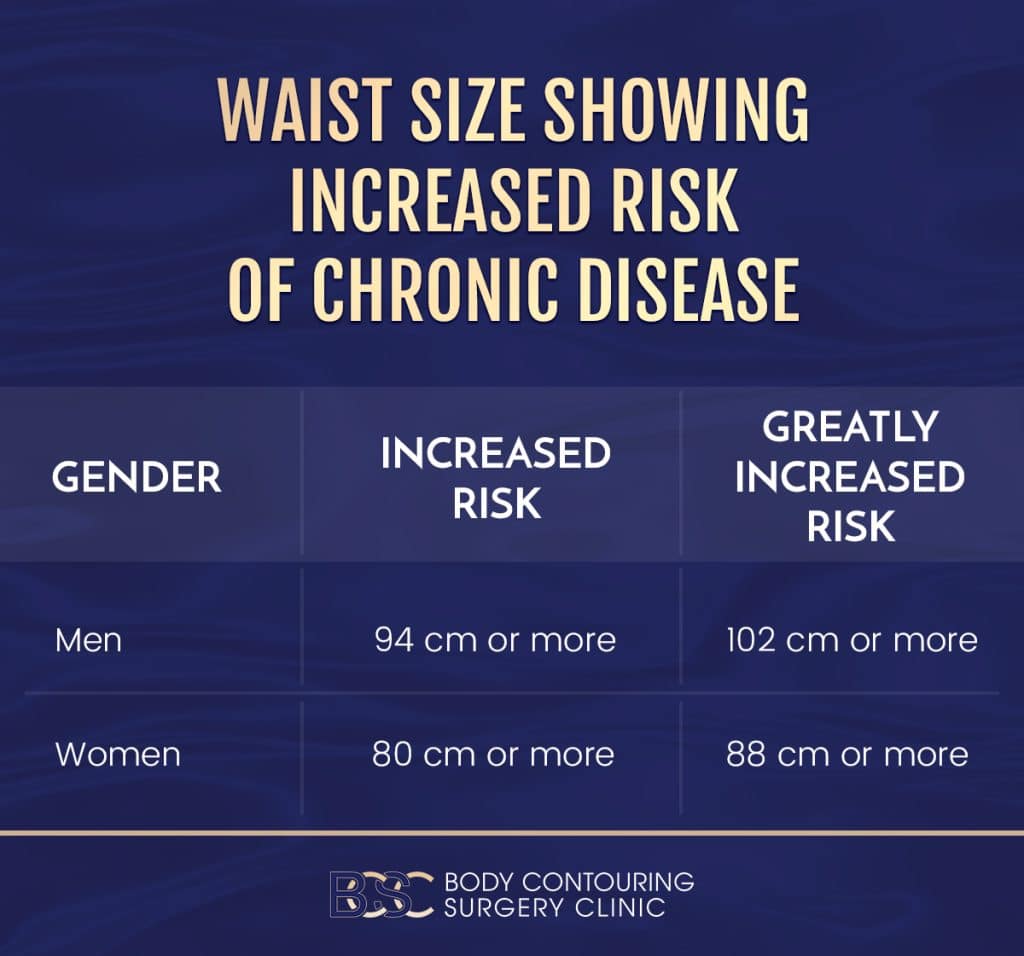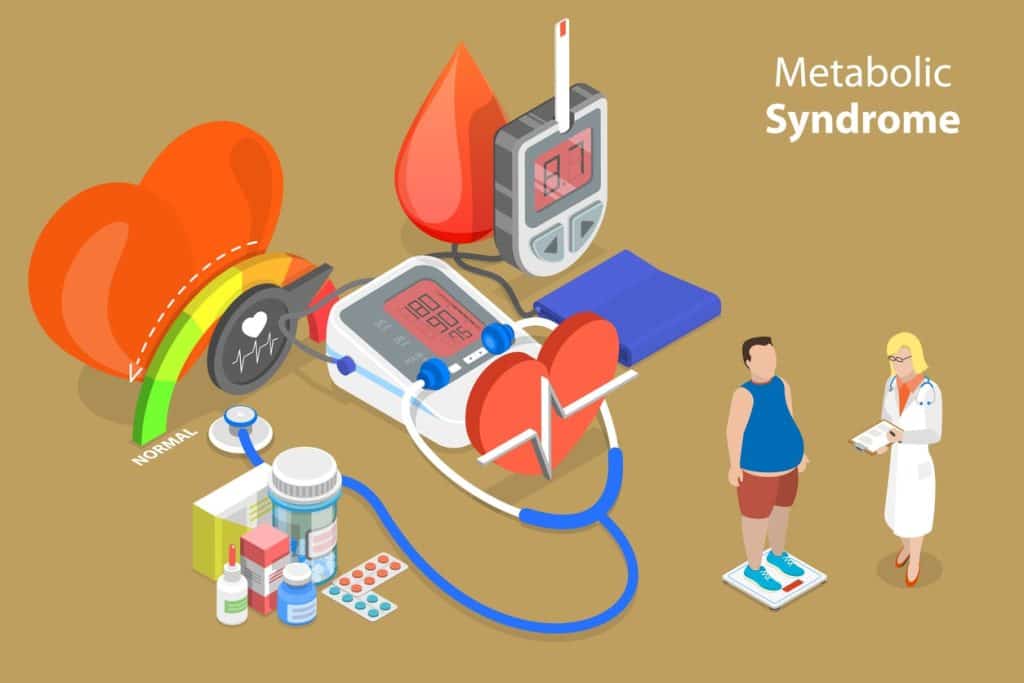
Regular monitoring of both BMI and waist circumference can empower individuals to make informed lifestyle choices. Understanding these metrics enables better management of health risks associated with obesity. Engaging in a balanced diet and physical activity can help maintain a healthy weight and reduce potential health complications.

What is Body Mass Index (BMI)?
Body Mass Index (BMI) is a numerical value derived from an individual’s weight and height. By dividing your weight kg by the square of your height in meters, BMI provides a single figure that helps categorize individuals into different weight ranges, such as:
- Underweight
- Normal weight
- Overweight
- Obese
This simple calculation can give a ** snapshot of whether you’re in a healthy weight range for your height.
The value obtained from the BMI calculation is used to assess how much body fat you have relative to your height and weight. This method doesn’t directly measure body fat, but it correlates well with more direct measures of body fat. For instance, a BMI between 18.5 and 24.9 is typically considered a normal BMI, indicating a balance between body weight and height that is associated with lower risk of weight-related diseases.
Bear in mind, however, that BMI represents only one aspect of health assessment. While it can indicate if someone is at risk of conditions such as diabetes or hypertension, it doesn’t account for factors like muscle mass, bone density, and overall body composition.
Understanding BMI Ranges
The standardization of BMI categories for adults simplifies the interpretation of health implications linked to your BMI score, irrespective of age, sex, or race. A BMI of less than 18.5 is considered underweight, which may indicate malnutrition or other health issues. Conversely, a BMI between 18.5 and 24.9 falls within the healthy range, suggesting a balance between weight and height that is ideal for most adults.
When the BMI ranges from 25 to 29.9, it is classified as overweight but not obese. A BMI above 30 is categorized as obese, with further subdivisions into Class 1, Class 2, and Class 3 obesity, indicating increasing levels of health risk. These ranges help identify individuals who may benefit from weight management interventions to reduce their risk of chronic diseases.


Limitations of BMI
Despite its usefulness as an initial reference point, BMI has significant drawbacks. It doesn’t distinguish between body fat and muscle mass, which means that individuals with high muscle mass, such as athletes and bodybuilders, might be categorized as overweight or obese despite having low body fat. This lack of differentiation can lead to misleading assessments of health.
Moreover, BMI doesn’t account for age or gender differences. For instance, women and older adults typically have more body fat than men and younger individuals with the same BMI. This can result in underestimating or overestimating health risks based on BMI alone. Additionally, BMI is less accurate for certain groups, such as pregnant women, children, and those with conditions that affect fluid balance.
Ethnicity also plays a role in the accuracy of BMI as a health indicator. Different ethnic groups have varying body composition norms, and BMI thresholds might not be equally valid across all populations. Therefore, while BMI is a helpful tool, it should be used in conjunction with other measurements for a more comprehensive health assessment.
Join Our Free Weight Tracker Today!
Easily track your weight and measurements, and visualize your progress with charts and photos. Sign up for personalized support from our expert team! Start your journey now!
Importance of Waist Measurement
Complementing BMI, waist measurement crucially aids in assessing body fat distribution, especially abdominal fat– a key indicator of health risks. Unlike BMI, waist circumference can highlight the amount of fat stored around the middle, which is more closely associated with conditions like type 2 diabetes, heart disease, and certain cancers.
Combining waist circumference with BMI provides a more nuanced picture of health. For instance, a person with a normal BMI but a high waist circumference may still be at increased risk for health issues due to the presence of visceral fat. This combination is particularly useful for identifying individuals who might benefit from targeted interventions to reduce abdominal fat and associated health risks.

How to Measure Your Waist
Measuring your waist accurately is straightforward but requires careful attention to detail. Here’s how to do it:
- Stand up straight and place a tape measure around your middle, just above your hipbones.
- Ensure the tape measure is parallel to the floor.
- Make sure the tape measure is snug but not tight.
- This positioning ensures you are measuring the correct area, which is crucial for an accurate reading.
To measure your waist circumference, follow these steps:
- Measure just after exhaling, ensuring a ** fit of the tape around your waist without it pressing into the skin.
- For the best results, place one finger inside the tape to ensure it’s not too tight.
- This method provides a reliable measurement that can be used to assess health risks related to abdominal fat.
Waist Size and Disease Risk
Disease risk can be robustly predicted by waist size. A larger waist circumference indicates higher internal fat deposits around vital organs, increasing the risk of chronic conditions such as type 2 diabetes, heart disease, and some cancers. Specifically, a waist size greater than 80cm for women or 94cm for men significantly raises the risk of these health issues.
In general, a larger waist circumference is associated with a higher risk of developing chronic health conditions.
This increased risk is due to visceral fat, which surrounds organs like the heart, liver, and pancreas. High levels of visceral fat are associated with metabolic disturbances and increased inflammation, both of which contribute to chronic diseases. Therefore, keeping your waist size within recommended limits is crucial for maintaining good health.

BMI vs Waist Circumference
The comparison of BMI and waist circumference brings to light unique benefits and limitations inherent in each. While BMI provides a quick assessment of whether an individual is within a healthy weight range, it doesn’t account for fat distribution or muscle mass. This can lead to misclassifications, especially among muscular individuals or those with low muscle mass but high body fat.
On the other hand, waist circumference is a better measure for assessing fat distribution. It specifically highlights abdominal fat, which is more strongly linked to health risks like cardiovascular disease and metabolic syndrome. For example, waist measurements exceeding 94 cm for men and 80 cm for women increase the risk of certain cancers and other chronic conditions.
Ultimately, combining BMI with waist circumference offers a more comprehensive assessment of health risks. While BMI helps identify general weight categories, waist measurement provides insights into fat distribution, making it a more precise indicator of health risks associated with excess abdominal fat.
What is Better BMI or Waist Circumference?
In choosing between BMI and waist circumference, one must take into account the unique insights each measurement provides. Waist circumference is a better estimate of visceral fat, the dangerous internal fat that surrounds organs and is strongly linked to health risks like cardiovascular disease, metabolic syndrome, and type 2 diabetes. This makes waist measurement a more effective predictor of certain health conditions.
However, BMI still holds value as it provides a quick, general assessment of whether an individual falls within a healthy weight range based on their weight and height. Both measurements have their place, but for a more accurate health risk assessment, waist circumference offers additional insights that BMI alone cannot provide.
Health Risks Associated with Excess Body Fat

A multitude of health risks, inclusive of heart disease, high blood pressure, and diabetes, are associated with excess body fat. BMI, along with factors like blood pressure and cholesterol levels, helps estimate the risk of heart attacks or strokes. High blood pressure, or hypertension, is a significant risk factor for heart disease, often exacerbated by excess body fat.
Other health issues associated with excess body fat include sleep apnea, digestive problems, and certain types of cancer, such as breast and colon cancer. Maintaining a healthy weight reduces these risks and supports overall health. High levels of LDL cholesterol, low HDL cholesterol, high triglycerides, and high blood glucose levels further compound health risks associated with excess body fat.
A family history of premature heart disease can also heighten health risks. To manage these risks and ensure effective disease control, it is crucial to:
- Manage body weight and fat levels proactively
- ** these risk factors through lifestyle changes
- ** health outcomes
- Reduce the likelihood of chronic diseases.
Maintaining a Healthy Weight Range

A balanced diet, frequent physical activity, and mindful eating habits collaboratively play a role in maintaining a healthy weight range. Following a heart-healthy eating pattern, which includes a variety of vegetables, fruits, whole grains, low-fat dairy, and lean proteins, supports weight management and overall health. Regular physical activity, such as walking, running, swimming, and dancing, is crucial for maintaining a healthy weight.
Mindful eating habits, such as listening to hunger and fullness cues, managing triggers for overeating, and developing stress coping strategies, are essential for sustainable weight loss. Creating a supportive environment, with encouragement from friends and family, and non-food-related rewards, can significantly aid long-term weight management.
For children and older adults, maintaining a healthy weight is particularly important due to age-related changes in metabolism and growth requirements. Adopting healthy habits early on and adjusting them as necessary can help maintain a healthy weight throughout life.
Strategies for Weight Loss
Successful weight loss strategies encompass the following:
- Establishment of achievable goals
- Preference for whole foods like fruits, vegetables, lean proteins, and whole grains over processed foods
- Involvement in routine physical activity
Aiming for a loss of around 0.5 to 1 kg per week is considered ** and sustainable. Prioritizing whole foods helps create sustainable eating habits.
Incorporating a mix of aerobic exercises and strength training into your routine is crucial for effective weight loss and muscle building. Older adults should aim for at least 150 minutes of moderate-intensity physical activity per week to support weight management and overall health.
Weight loss plateaus are common and can be managed by reassessing caloric intake and physical activity or making small adjustments to diet and workouts. Consulting healthcare providers before starting a weight loss plan ensures ** and realistic goal setting, especially if you have existing health conditions.
Other Factors Affecting Health Risks
Metabolic changes with age can markedly affect health risks, thereby demanding alterations in calorie intake or levels of physical activity for seniors. As metabolism slows with age, maintaining a healthy weight may require more effort and conscious lifestyle adjustments.
Ethnic differences and specific medical conditions also influence health risks. The World Health Organization recognizes that certain ethnic groups, such as Pacific Islanders and South Asians, may have different health risk thresholds. Understanding these nuances is crucial for tailoring health recommendations to individual needs.
Summary
Understanding both BMI and waist circumference is crucial for a comprehensive health assessment. While BMI provides a general indication of whether you’re in a healthy weight range, waist circumference offers more precise insights into abdominal fat and related health risks. Combining these measures gives a fuller picture of your health status and potential risk factors.
Maintaining a healthy weight involves balanced eating, regular physical activity, and mindful habits. By setting achievable goals and consulting healthcare providers, you can tailor your approach to your unique needs. Remember, the journey to better health is a marathon, not a sprint. Stay informed, stay active, and take control of your health.
Frequently Asked Questions
To calculate your BMI, divide your weight in kilograms by the square of your height in meters. This will help you determine if you are underweight, normal weight, overweight, or obese.
A healthy BMI range for adults is between 18.5 and 24.9, as it is associated with a lower risk of weight-related diseases.
To measure your waist circumference accurately, stand up straight, place a tape measure above your hipbones, and measure your waist just after you exhale. Ensure the tape measure is snug but not too tight and parallel to the floor for accuracy.
For assessing health risks related to visceral fat, such as cardiovascular disease and type 2 diabetes, waist circumference is more effective than BMI.
Excess body fat increases the risk of heart disease, high blood pressure, stroke, diabetes, certain cancers, sleep apnea, and digestive issues, so it’s important to maintain a healthy weight.